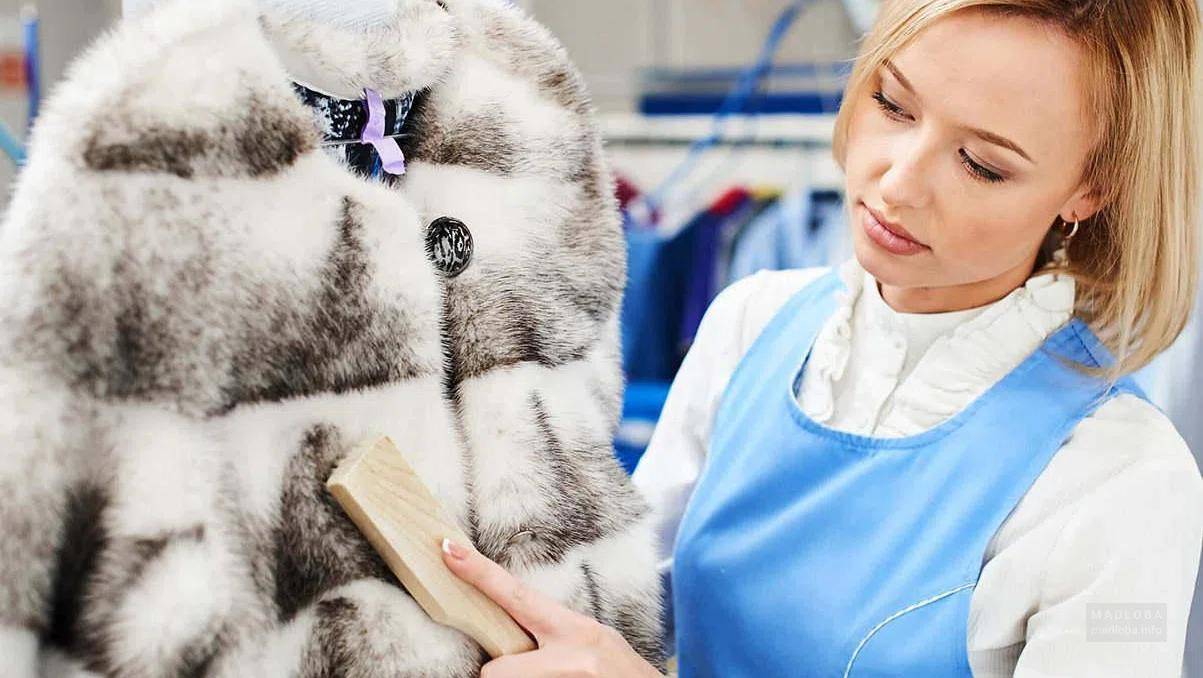
Complex Structure and Sensitivity
Understanding fur as a composite of hair and hide
Fur, unlike fabric-based textiles, comprises two components: the hair layer and the leather base. Both require separate consideration during cleaning and maintenance. While the outer hair provides texture, color, and insulation, the inner hide supports the structure and must retain flexibility. Improper moisture levels, excessive agitation, or unsuitable temperatures can lead to dryness, stiffness, or hair loss. At GLENCO DRY CLEANING , the dual nature of fur is treated with distinct attention, ensuring the integrity of both layers is respected throughout every stage of care. 🦊🧼🧤
Temperature and Moisture Regulation
Minimizing structural strain through calibrated methods
Cleaning fur involves the use of temperature-controlled processes designed to protect the organic nature of the hide and the softness of the hair. Excessive heat can dehydrate the leather backing, while cold water can harden the structure or reduce pliability. Therefore, all cleaning is performed under moderate, regulated conditions that promote balance. Moisture levels are also adjusted to avoid oversaturation. This prevents shrinkage and allows for proper absorption of conditioning agents during the cleaning cycle. 🌡️💧🧺
Restoring Smoothness and Hair Alignment
Use of specialized tools for hair care
The appearance and comfort of fur depend significantly on the arrangement of individual hairs. After cleaning, a series of soft-bristled brushes are employed to gently align the hairs in their natural direction. This detangling process is completed without force or repetitive motion, preventing root loosening. Brushes with varying thicknesses are selected based on the length and density of the fur. Regular brushing not only enhances surface smoothness but also reduces matting, shedding, and static buildup. 🧴🧽🦝
Restoring Internal Flexibility
Application of hydrating compounds to support structure
Fur hides lose natural oils over time, especially when exposed to low humidity or excessive cleaning. Rehydration is achieved using safe, absorbent conditioners that restore flexibility to the leather base without increasing weight or stickiness. These compounds are applied using manual techniques, ensuring even distribution. Conditioning also helps to reduce cracking and fiber brittleness. The result is a hide that remains soft, foldable, and resistant to environmental stress. This treatment is fundamental to extending the usability of fur products. 💧🧤🦫
Shielding Against Environmental Effects
Adding a layer of protection without sealing pores
Following the cleaning and rehydration process, a breathable protective solution is applied to the fur surface. This coating serves multiple functions: it helps repel dust, prevent moisture absorption from external sources, and reduce the chance of hair tangling. Importantly, it does not form a film or alter the natural look of the fur. Its role is to supplement the fur’s own barrier properties while allowing it to function normally in changing humidity or temperature conditions. 🛡️🧴🦢
Final Assessment for Uniform Quality
Ensuring consistency in texture, shine, and resilience
After all treatments are complete, each fur item is evaluated for shine uniformity, hair density, and surface balance. Hairs are checked for alignment, while the hide is assessed for flexibility and tension response. Any area requiring additional brushing or spot conditioning is treated manually. This final stage confirms that the item meets standards of visual and functional stability before being returned. Measurements are taken where needed to ensure shape retention and overall garment integrity. 📏🔍🧣
Long-Term Care Instructions
Supporting continued quality through proper storage
Fur maintenance extends beyond professional cleaning. Clients are provided with storage recommendations that include optimal humidity, temperature range, and positioning. Items are advised to be kept in breathable garment bags, away from direct sunlight and moisture sources. Regular airing and light brushing can prevent surface buildup between cleanings. These guidelines are based on the unique needs of fur materials and aim to reduce the frequency of deep cleaning while preserving quality. 📦🌫️👘
Reinforcing Wear Points and Aging Sections
Optional enhancements for structural support
In some cases, fur garments may show signs of wear at high-friction areas such as collars, cuffs, or seams. Our preservation service includes reinforcing stitching, applying soft inserts to reduce folding stress, or integrating flexible linings for shape support. These additions are matched in color and texture, ensuring a seamless appearance. The goal is to provide discreet reinforcement without altering the natural drape or weight of the fur. 🔧🧷🪡
Minimizing Resource Use
Balancing effectiveness with environmental awareness
Although fur is a natural material, its treatment can involve resources such as water, energy, and chemical conditioners. GLENCO DRY CLEANING maintains a focus on minimal-impact techniques, using precision dosing, re-use of conditioned air for drying, and low-volume liquid cycles. Wastewater is filtered, and energy-efficient equipment is applied during all drying and storage phases. The balance between preserving fur items and reducing external environmental strain remains a key consideration across all operations. 🌍♻️🧵